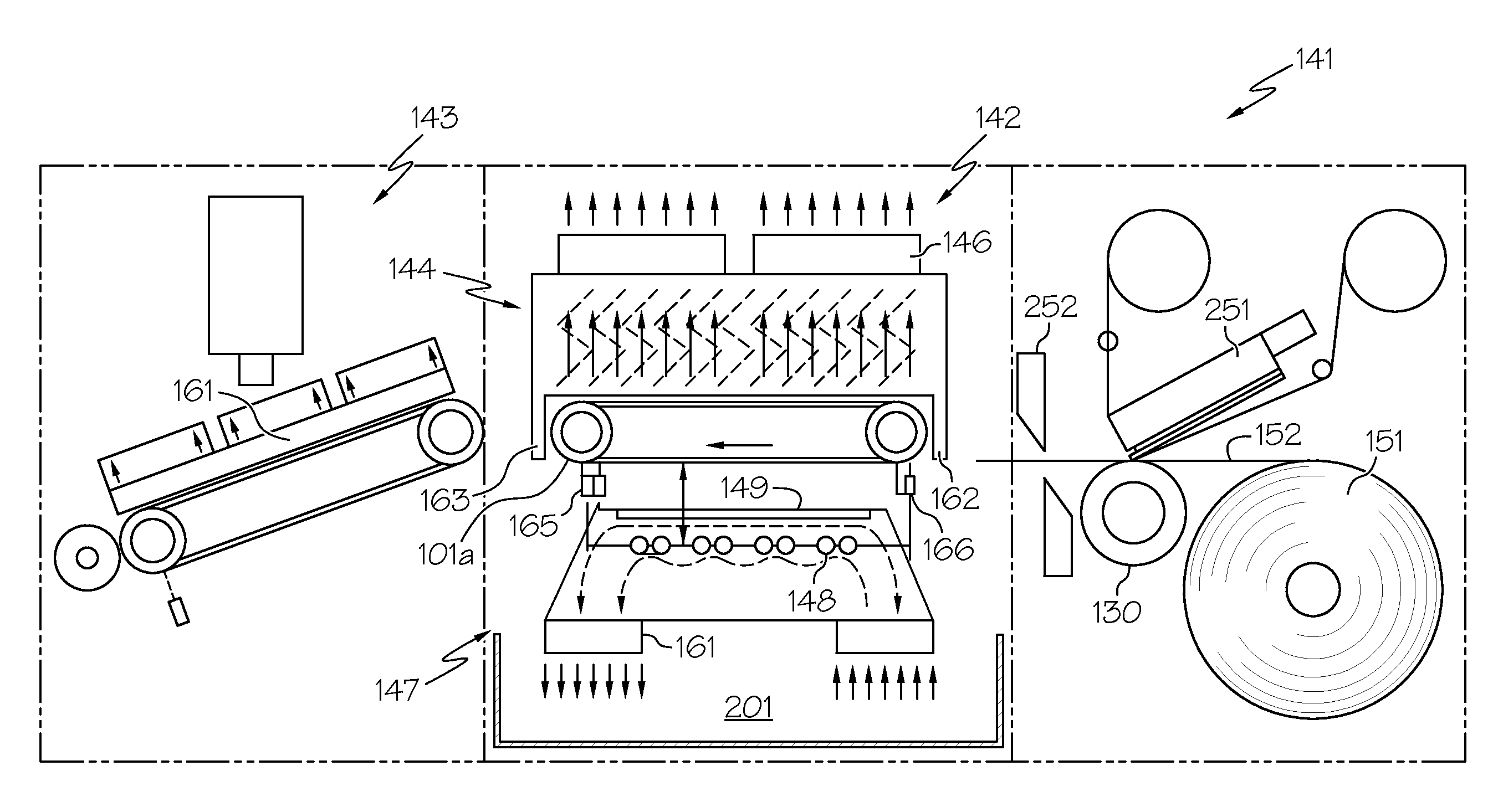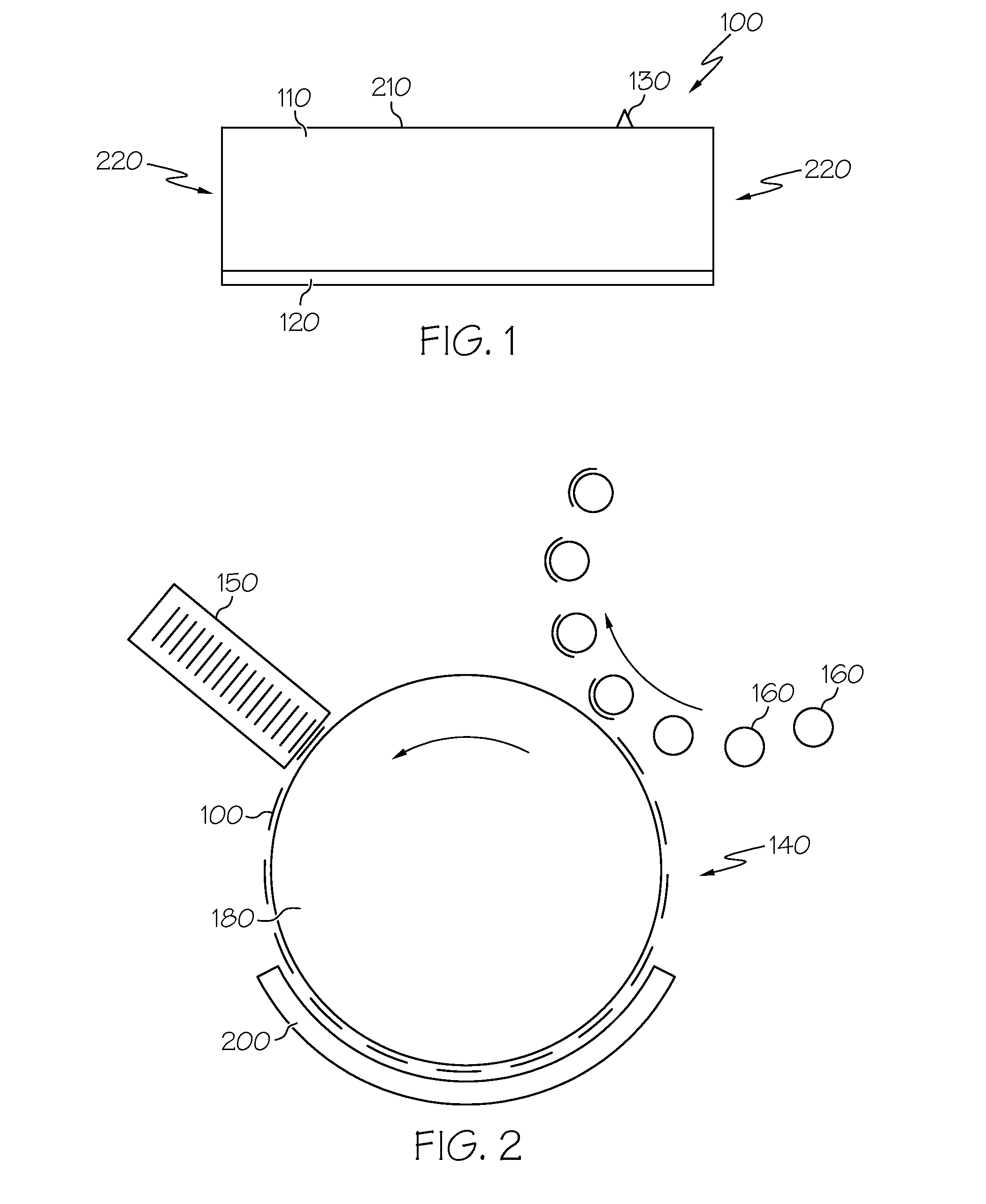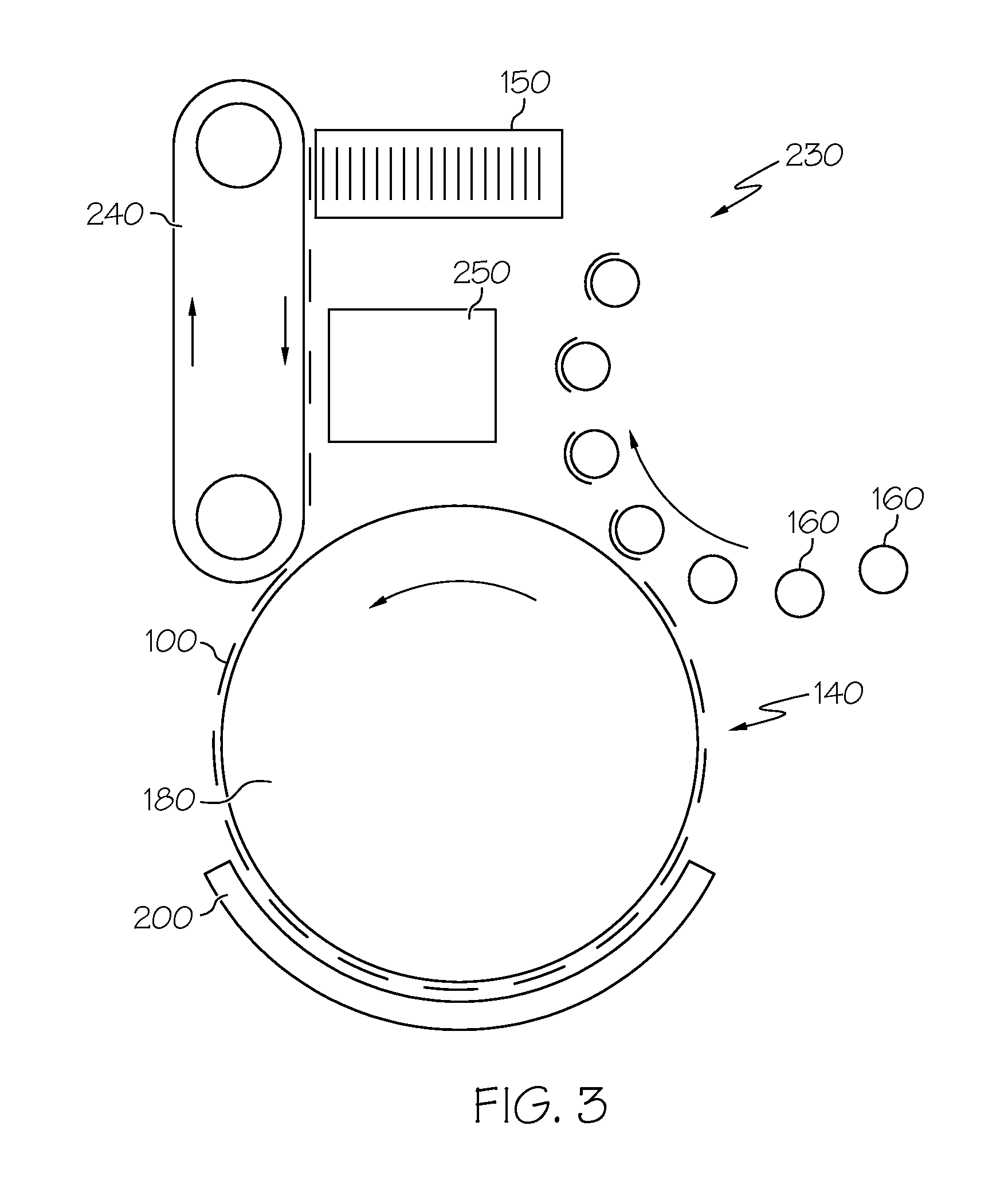Linerless labels and activatable adhesives, systems, machines and methods therefor
a technology of activating adhesives and linerless labels, applied in the direction of identification means, film/foil adhesives, instruments, etc., can solve the problems of not being able to be used as a source of recycled paper, adhesive buildup still occurs in various sections of equipment, and the linerless labels have not received wide customer acceptance, so as to improve the safety and operability of the system
- Summary
- Abstract
- Description
- Claims
- Application Information
AI Technical Summary
Benefits of technology
Problems solved by technology
Method used
Image
Examples
example 1
[0200]An emulsion adhesive polymer base is prepared by emulsion polymerization from a plurality of monomers consisting of 37.2% butyl acrylate, 29.3% styrene, 29.3% methyl methacrylate, 1.7% methacrylic acid, and 2.5% acrylic acid, based on the weight of all monomers, with 0.06% by weight of n-dodecy mercaptan added as a chain transfer agent. A one-liter, jacketed, cylindrical reaction flask equipped with a four-neck flask head was fitted with a steel stirring rod with multiple steel blades, a reflux condenser, a thermometer, and a nitrogen inlet tube. The stirring speed is set at approximately 126 rpm, and the reaction temperature was set at 80° C. A reactor pre-charged solution is made by dissolving 1.0 g of HITENOL BC-10 (Dai-lchi Kogyo Seiyaku Co., Ltd. of Kyoto, Japan) surfactant in 100 g deionized water. A pre-emulsion feed soap solution is formed by dissolving 2.0 g HITENOL BC-10 and 105 g deionized water. A monomer mix is made up with 140 g of n-butyl acrylate, 110 g styrene...
example 2
[0201]The same polymerization procedure that is used in Example 1 is used, except that the monomers used for the polymerization are used in the following weight percentages. 48.0% butyl acrylate, 23.9% styrene, 23.9% methyl methacrylate, 1.7% methacrylic acid, and 2.5% acrylic acid.
[0202]Preparation of an exemplary white heat-activated adhesive is as follows. A switchable adhesive formulation is prepared from the noted adhesive polymer base by blending with a selected plasticizer and tackifier at room temperature for enough time to ensure a homogenous composition. Typically, the preferred melting point of such solid plasticizer is above 40° C. In this example, ground plasticizer dicyclohexyl phthalate or U250M supplied by Unitex Corp. of Greensboro, N.C. is used. The melting point of U250M is in the range of 63° C. to 65° C. The exemplary tackifier is TACOLYN 3400 (softening point 92° C.) which is a resin dispersion by Eastman Chemical Company of Kingsport, Tenn. TACOLYN 3400 is a r...
example 3
[0203]An emulsion adhesive polymer base is prepared by emulsion polymerization from plurality of monomers consisting of 13.15% of butyl acrylate, 75.16% of styrene, 0.12% of methyl acrylate, 1.30% of merthacrylic acid, 1.64% of acrylic acid, 3.67% of methyl methacrylate, 1.01% of SR 206 (Sartomer Company Inc., Exton, Pa.) and 0.50% of SR 306 (Sartomer Company Inc., Exton, Pa.), based on the weight of all monomer and chain transfer agent, with 3.45% by weight of n-dodecyl mercaptan added as a chain transfer agent.
[0204]A one-liter, jacketed, cylindrical reaction flask equipped with a four-neck flask head was fitted with a steel rod with multiple blades, a reflux condenser, a thermometer, and a nitrogen inlet tube. The stirring rate is set at approximately 126 rpm.
[0205]A reactor pre-charge solution is made by dissolving 2.00 g of Disponil FES-77 (Cognis Corp., Cincinnati, Ohio), 0.60 g of Surfynol 485 (Air Products and Chemicals, Inc., Allentown, Pa.) and 0.01 g of Drewplus L-198 (As...
PUM
| Property | Measurement | Unit |
|---|---|---|
| activation time | aaaaa | aaaaa |
| activation time | aaaaa | aaaaa |
| activation time | aaaaa | aaaaa |
Abstract
Description
Claims
Application Information
 Login to View More
Login to View More - R&D
- Intellectual Property
- Life Sciences
- Materials
- Tech Scout
- Unparalleled Data Quality
- Higher Quality Content
- 60% Fewer Hallucinations
Browse by: Latest US Patents, China's latest patents, Technical Efficacy Thesaurus, Application Domain, Technology Topic, Popular Technical Reports.
© 2025 PatSnap. All rights reserved.Legal|Privacy policy|Modern Slavery Act Transparency Statement|Sitemap|About US| Contact US: help@patsnap.com



